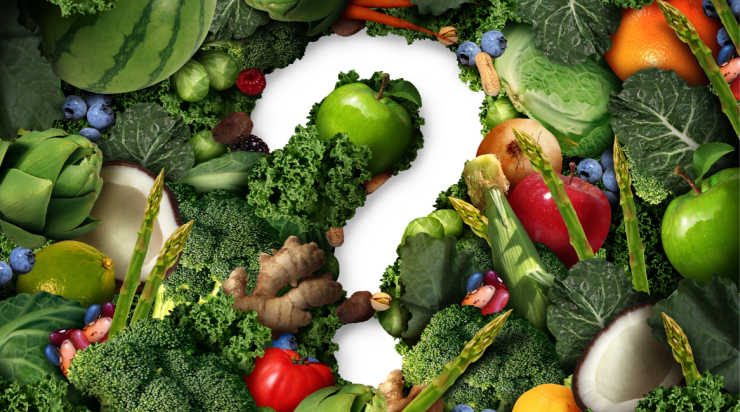At Mercola.com, Dr. Joseph Mercola discusses “the Dirty Dozen” worst contaminated fruits and vegetables. He writes:
Fresh produce, whether organic or conventionally grown, is one of the healthiest food choices you can make. Organic produce gains an edge, however, because it tends to be more nutritious, tastes better and, importantly, does not contain pesticide residues like conventional produce does.
In fact, the No. 1 reason people go organic is to avoid pesticides and other chemicals, and 40% of Americans consume organic food either all of the time or occasionally.1
If your budget prevents you from buying organic food 100% of the time — or there’s not an adequate selection in your area — it’s useful to know which conventional foods are the most contaminated and therefore the most important to buy organic.
Since 2004, the Environmental Working Group (EWG) has released a “Dirty Dozen” list for produce, based on testing data from the Department of Agriculture and the Food and Drug Administration. These are the foods most heavily contaminated with pesticides. They also release a “Clean 15” list of the produce with the least amount of pesticides.
Many Toxins Remain in Produce After Washing and Peeling
The USDA and FDA use slightly different techniques when testing produce for contaminants. The USDA peels or scrubs and washes produce before testing, whereas the FDA only removes surface dirt.2
The fact that washed and/or peeled produce still test positive for pesticides is telling, to say the least. This means you simply cannot avoid these toxic chemicals by being diligent about rinsing and peeling your fruits and vegetables. The only way to avoid them, really, is to buy organic produce, as organic standards forbid the use of most synthetic and manmade pesticides.3
EPA’s ‘Allowable Levels’ May Be Unsafe for Children
As for why you want to avoid both pesticides and herbicides, there’s ample evidence showing that agricultural chemicals can have adverse health effects — especially in children — and that these negative impacts may even cancel out some of the health benefits you’d normally expect from fresh fruit and vegetables.
What’s more, an investigation4 by the EWG published in 2020 concluded that the EPA has, in most cases, failed to take children into account when setting allowable limits for pesticides. As a result, children who eat conventional produce may be exposed to unsafe levels of these chemicals. As reported by the EWG:5
“Research from Harvard University shows that consuming fruits and vegetables with high levels of pesticide residues may lessen the benefits of fruit and vegetable consumption, including protection against cardiovascular disease6 and mortality.7
A recent EWG investigation8 published in the peer-reviewed journal Environmental Health9 found that the EPA has failed to adequately protect children from pesticides.
For almost 90% of the most common pesticides, the agency has neglected to apply the Food Quality Protection Act–mandated children’s health safety factor to the allowable limits.
The threats pesticides pose to children’s health have been known since at least 1993 — 30 years ago — when the National Academies of Science published a landmark study10 warning of inadequate oversight.
The American Academy of Pediatrics recommends11 parents concerned about their children’s exposure to pesticides consult EWG’s Shopper’s Guide.
Choosing organic fruits and vegetables can almost immediately reduce the amounts of residues in a person’s body, because the harmful chemicals used on non-organic, or conventional, produce are no longer a factor.”
Dirty Dozen 2023
The 2023 shopper’s guide12 includes data from 46,569 samples of 46 fruits and vegetables, revealing the presence of 251 different pesticides in total, including some that have already been banned due to their potential health effects. In all, nearly 75% of nonorganic fresh produce sold in the U.S. contain residues of one or more potentially harmful pesticides.
A total of 210 different pesticides were detected on the fruits and vegetables on the Dirty Dozen list, and of those, more than 50 were found on every crop on the list with the exception of cherries.
At least one sample of every type of produce on the Dirty Dozen list had 13 or more pesticides. Kale, collard, mustard greens, bell peppers and hot peppers all had detectable levels of 101 to 103 different pesticides.
Strawberries have remained in the No. 1 slot for several years, and that hasn’t changed. They’re still the most heavily contaminated produce out there. Newcomers on the Dirty Dozen list for 2023 are blueberries and green beans, now ranked as No. 11 and No. 12, respectively.
Here’s the full Dirty Dozen list, in order of most contaminated to least contaminated:13
- Strawberries
- Spinach
- Kale, collard and mustard greens
- Peaches
- Pears
- Nectarines
- Apples
- Grapes
- Bell peppers and hot peppers
- Cherries
- Blueberries
- Green beans
Read more here.
If you’re willing to fight for Main Street America, click here to sign up for the Richardcyoung.com free weekly email.






